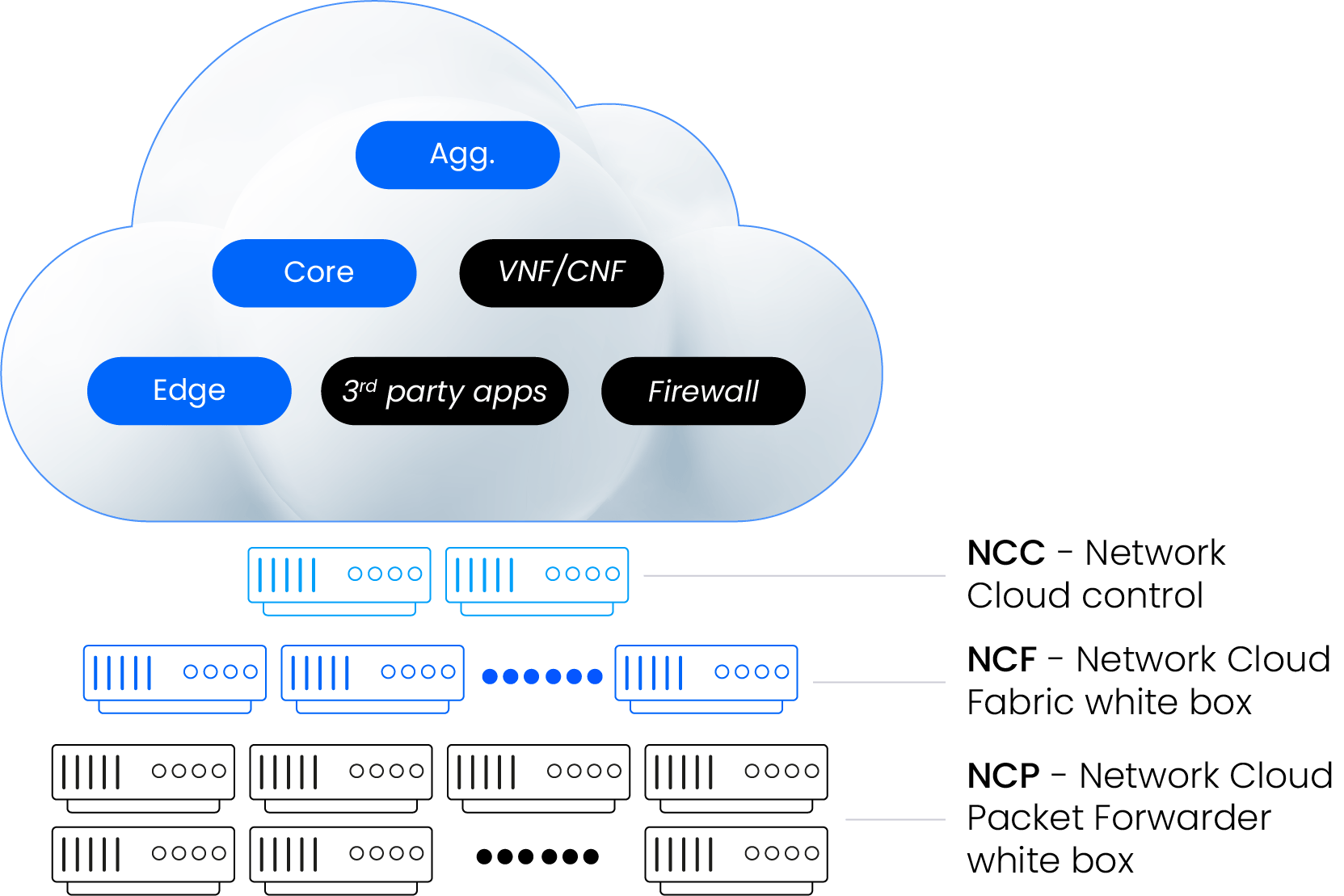Blog
Q&A with KGPCo’s Joe Baeumel, VP of Partner Strategy and Business Development Joe Baeumel, VP of Partner Strategy and Business Development...
Read moreCloud-native, distributed networking software, built on containerized microservices, which creates a unified, shared infrastructure over a distributed architecture.
Leading the transformation to software-based networks, DriveNets Network Operating System (DNOS) virtualizes distributed networking and compute resources from white boxes and servers to create a unified, shared infrastructure that is managed as a single entity.
DNOS acts as the brain of the Network Cloud.
Built on a Linux-based OS, containerized microservices and open APIs, DNOS provides a scalable, reliable and programmable infrastructure to run data and control plane functions (routing and others), supporting multiple service offerings at scale, including routing – from core to access- and hosting for third-party services.
These virtualized functions can be fired up just like running applications in the cloud.
DriveNets Orchestrator, DNOR, automates the network’s lifeCycle, supporting zero-touch provisioning (ZTP), visibility and analytics.




Cloud-native
Hardware abstraction layer
Cluster management
Internet-scale routing
Resiliency, high-availability and QoS
Configuration and management
Hosting platform for network-centric services
Efficient resource allocation/strong>
Programmable data, control and management planes
High-scale
Optimized use of resources
Carrier-grade scale and QoS for the largest networks
Chassis demystified
Configuration and management
Agile infrastructure for telco and edge cloud
Improve network economics
Blog
Q&A with KGPCo’s Joe Baeumel, VP of Partner Strategy and Business Development Joe Baeumel, VP of Partner Strategy and Business Development...
Read moreWhite Papers
The DriveNets Network Cloud model addresses the same network, service-scaling and time-to-market challenges that network function virtualization (NFV) has tried...
Read moreBlog
Recently, I delivered a presentation at Networking Field Day 22, covering the DriveNets Network Operating System (DNOS), which, from the...
Read more